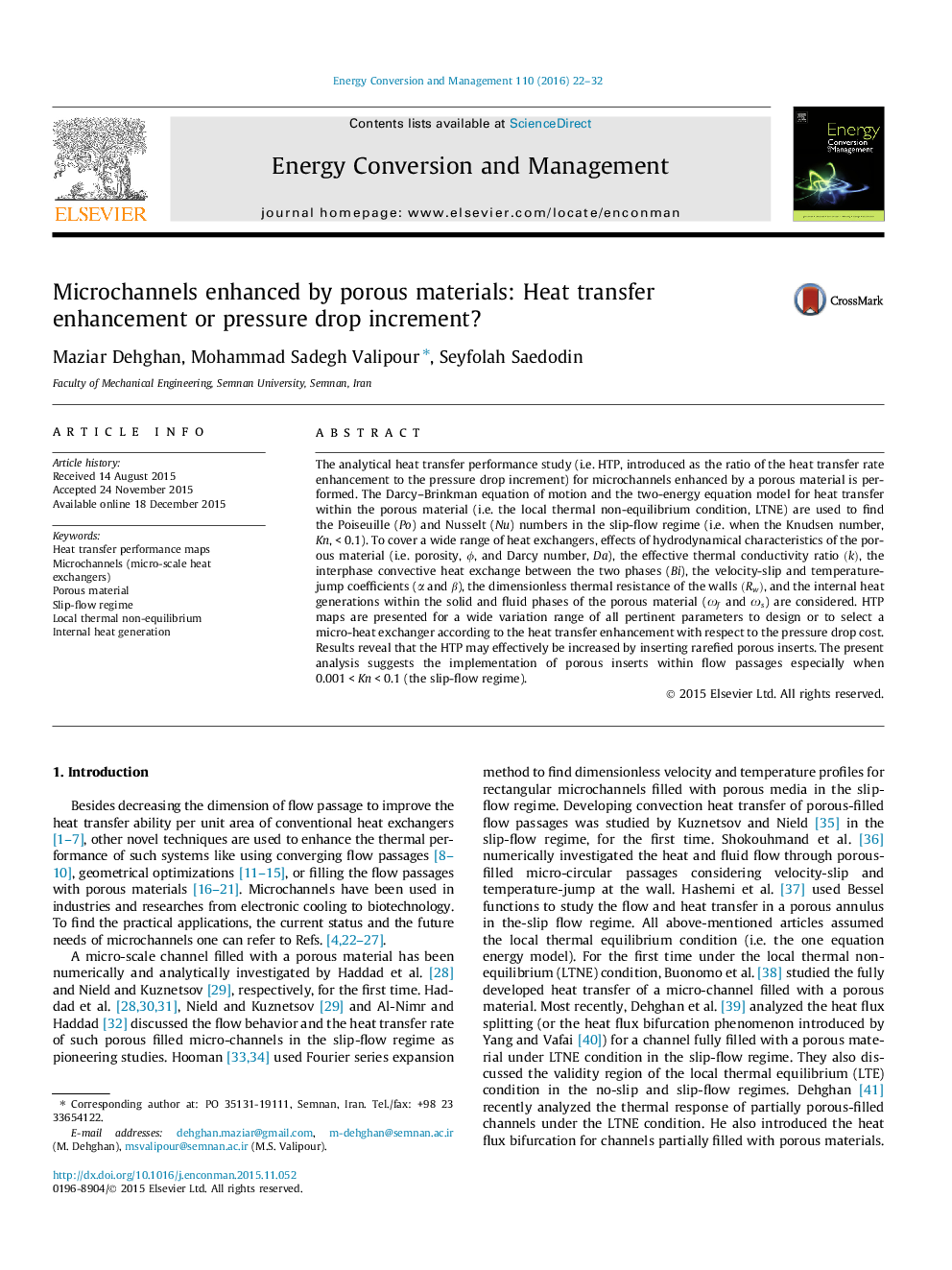| Article ID | Journal | Published Year | Pages | File Type |
|---|---|---|---|---|
| 760384 | Energy Conversion and Management | 2016 | 11 Pages |
•The heat transfer performance (HTP) of porous-microchannels is studied.•HTP represents ratio of heat transfer rate enhancement to pressure drop increment.•High HTP values can be achieved by porous inserts.•Porous inserts are more effective in the slip-flow regime.
The analytical heat transfer performance study (i.e. HTP, introduced as the ratio of the heat transfer rate enhancement to the pressure drop increment) for microchannels enhanced by a porous material is performed. The Darcy–Brinkman equation of motion and the two-energy equation model for heat transfer within the porous material (i.e. the local thermal non-equilibrium condition, LTNE) are used to find the Poiseuille (Po) and Nusselt (Nu) numbers in the slip-flow regime (i.e. when the Knudsen number, Kn, < 0.1). To cover a wide range of heat exchangers, effects of hydrodynamical characteristics of the porous material (i.e. porosity, ϕϕ, and Darcy number, Da ), the effective thermal conductivity ratio (k)(k), the interphase convective heat exchange between the two phases (Bi ), the velocity-slip and temperature-jump coefficients (αα and ββ), the dimensionless thermal resistance of the walls (Rw)(Rw), and the internal heat generations within the solid and fluid phases of the porous material (ωfωf and ωsωs) are considered. HTP maps are presented for a wide variation range of all pertinent parameters to design or to select a micro-heat exchanger according to the heat transfer enhancement with respect to the pressure drop cost. Results reveal that the HTP may effectively be increased by inserting rarefied porous inserts. The present analysis suggests the implementation of porous inserts within flow passages especially when 0.001 < Kn < 0.1 (the slip-flow regime).
